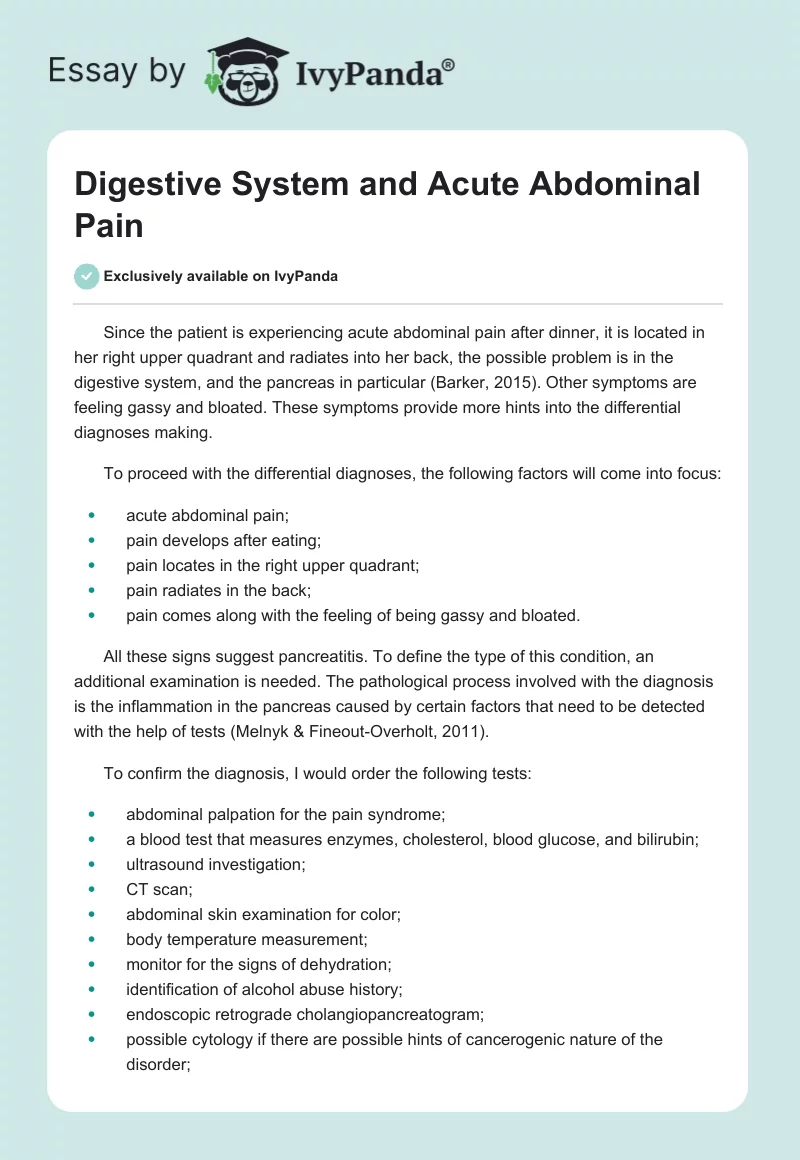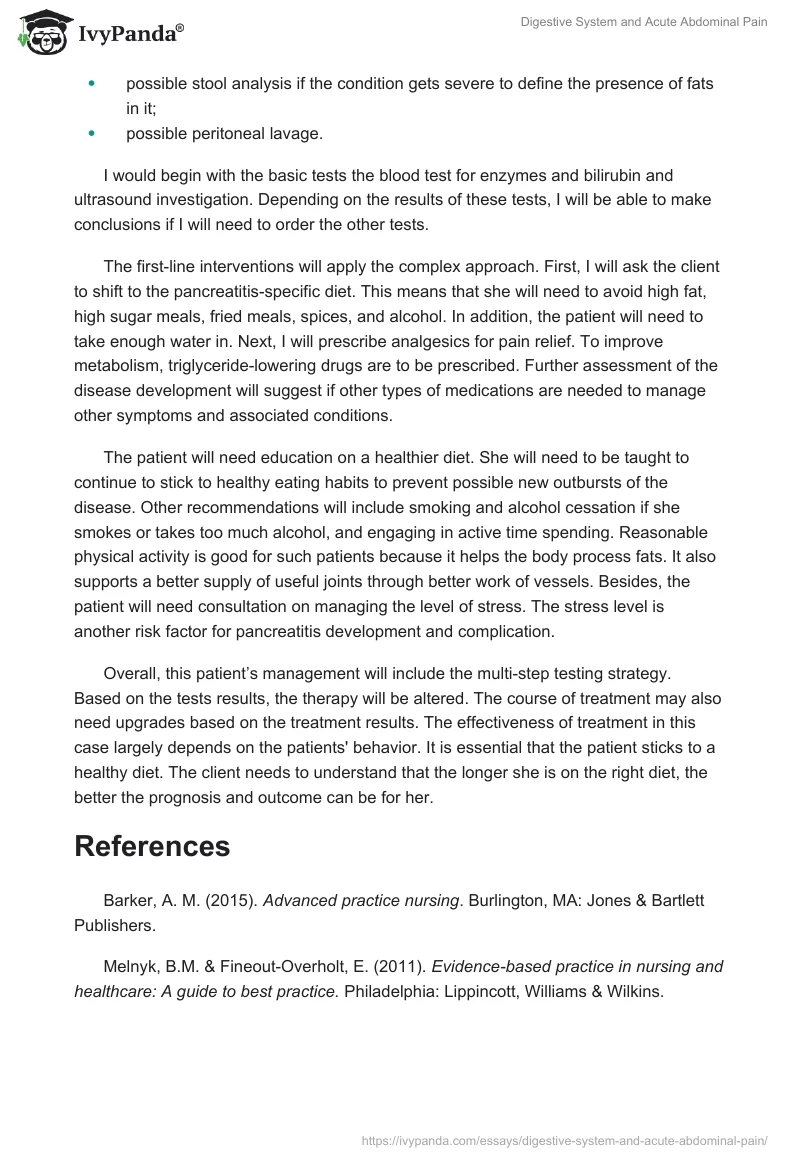Since the patient is experiencing acute abdominal pain after dinner, it is located in her right upper quadrant and radiates into her back, the possible problem is in the digestive system, and the pancreas in particular (Barker, 2015). Other symptoms are feeling gassy and bloated. These symptoms provide more hints into the differential diagnoses making.
To proceed with the differential diagnoses, the following factors will come into focus:
- acute abdominal pain;
- pain develops after eating;
- pain locates in the right upper quadrant;
- pain radiates in the back;
- pain comes along with the feeling of being gassy and bloated.
All these signs suggest pancreatitis. To define the type of this condition, an additional examination is needed. The pathological process involved with the diagnosis is the inflammation in the pancreas caused by certain factors that need to be detected with the help of tests (Melnyk & Fineout-Overholt, 2011).
To confirm the diagnosis, I would order the following tests:
- abdominal palpation for the pain syndrome;
- a blood test that measures enzymes, cholesterol, blood glucose, and bilirubin;
- ultrasound investigation;
- CT scan;
- abdominal skin examination for color;
- body temperature measurement;
- monitor for the signs of dehydration;
- identification of alcohol abuse history;
- endoscopic retrograde cholangiopancreatogram;
- possible cytology if there are possible hints of cancerogenic nature of the disorder;
- possible stool analysis if the condition gets severe to define the presence of fats in it;
- possible peritoneal lavage.
I would begin with the basic tests the blood test for enzymes and bilirubin and ultrasound investigation. Depending on the results of these tests, I will be able to make conclusions if I will need to order the other tests.
The first-line interventions will apply the complex approach. First, I will ask the client to shift to the pancreatitis-specific diet. This means that she will need to avoid high fat, high sugar meals, fried meals, spices, and alcohol. In addition, the patient will need to take enough water in. Next, I will prescribe analgesics for pain relief. To improve metabolism, triglyceride-lowering drugs are to be prescribed. Further assessment of the disease development will suggest if other types of medications are needed to manage other symptoms and associated conditions.
The patient will need education on a healthier diet. She will need to be taught to continue to stick to healthy eating habits to prevent possible new outbursts of the disease. Other recommendations will include smoking and alcohol cessation if she smokes or takes too much alcohol, and engaging in active time spending. Reasonable physical activity is good for such patients because it helps the body process fats. It also supports a better supply of useful joints through better work of vessels. Besides, the patient will need consultation on managing the level of stress. The stress level is another risk factor for pancreatitis development and complication.
Overall, this patient’s management will include the multi-step testing strategy. Based on the tests results, the therapy will be altered. The course of treatment may also need upgrades based on the treatment results. The effectiveness of treatment in this case largely depends on the patients’ behavior. It is essential that the patient sticks to a healthy diet. The client needs to understand that the longer she is on the right diet, the better the prognosis and outcome can be for her.
References
Barker, A. M. (2015). Advanced practice nursing. Burlington, MA: Jones & Bartlett Publishers.
Melnyk, B.M. & Fineout-Overholt, E. (2011). Evidence-based practice in nursing and healthcare: A guide to best practice. Philadelphia: Lippincott, Williams & Wilkins.


